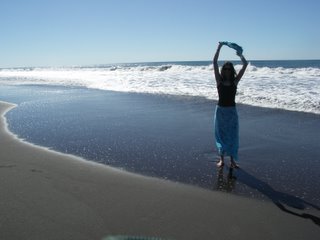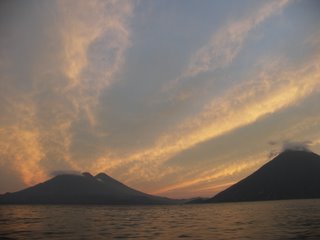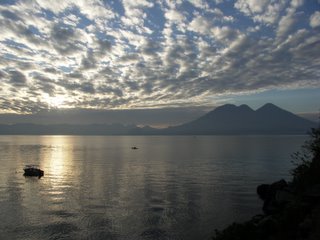El Quichè
I have finally arrived at my destination; Chichè, a municipality of 25,000 inhabitants including 35 outlying communities. I must admit, it conceals its numbers well. This small, sleepy, dusty little town would hardly lead anyone to believe that such a populace is contained within its perimeters. But then these perimeters extend for 30 kilometres or thereabouts. The library is excellently situated, fronting the main square, a source of pride for the Riecken Foundation, being their most centrally located library. It consists of one ample room, with plenty of light and the usual racks and shelves of books and magazines, three computers and a children’s corner painted with appropriately bright colours. To us, this may sound extremely familiar and not particularly notable, but to the Guatemalans, this library is extraordinary. As far as I know, until the Riecken Foundation commenced its project of constructing libraries here, most libraries in Guatemala were and still are `closed`, in that one cannot see the books available and in order to gain access, one has to read through a list of titles, usually filed on old-fashioned filing cards, and then only to gain referential access, meaning the books cannot be removed from the premises. The internet is still to arrive, which would improve the facilities no end, for at the moment Chichè has one tiny internet service and to call it a café would be a grand title indeed, with an extremely poor connection (sometimes it does not work for days on end) and Zacualpa cannot lay claim to any internet connection at all. As I write, La hora de cuentos (story time) is in progress, and the wonderful Alba (prize-winning librarian) is enchanting a group of young, mainly indigenous kids with the tale and morals of Pinocchio. Last week we had a session for youths entitled `self-esteem`, which was very well attended, with activities energetically run by Alejandra, a colleague from the foundation office in Antigua. The following day she ran another youth session at the library in Zacualpa, where the group watched `Maria Full of Graces`, a Colombian film about cocaine mules and the sad consequences. I was told that almost every family here has a member or knows someone who has taken this perilous route, so it seemed so much more poignant to be watching it here, in this company, compared to when I watched it at the cinema in Cardiff last year, far removed from the reality. Visiting Zacualpa for the first time was memorable indeed. I knew that the region of Quichè was one of the regions that suffered very badly during the 30-odd year civil war, which only ended in 1996, and it turns out that Zacualpa was one of the villages that was hardest hit. The militants used the convent there as one of their centres of operation, which means they turned it into a hell of captivity, humiliation, torture and assassination of many many innocents. I stayed the night in a cavernous room, full of some 50 beds or so, me being the sole occupant. Alejandra disclosed that she will not enter the premises, following the one and only night she ever spent there, hampered by insomnia and fear, unable to rid her mind from dwelling on past histories imagined. With this knowledge, I was not exactly enthusiastic about my impending lodging, however we had had such a long, exhausting day, for once, ironically, sleep presented no problems for me. The following day I looked around the convent and was enlightened as to its secrets and I considered myself fortunate that I was able to discover more about Guatemala`s tumultuous past, aiding my understanding of this country and therefore becoming closer to the spirit of the people. When the war ended, the convent was regained and its dark secrets spilled forth. A well was found to be full of the broken and mutilated bodies of men, women and children, and each and every one was exhumed and properly buried. A small, enclosed room was found, all four walls stained with blood, and it is presumed that this was a torture chamber. It is difficult to write these words but it is necessary to understand the past to understand the present. Guatemala is recovering from this hideous and recent history, but it has a long way to go. Today a chapel stands over the well, full of religious icons, candles and blessings for the dead, as is the small room with the stained walls. I spent a quiet time, alone, in both, thinking about the new experiences I am discovering every day and marvelling at the resilience of these people, who have endured so much over centuries past.










